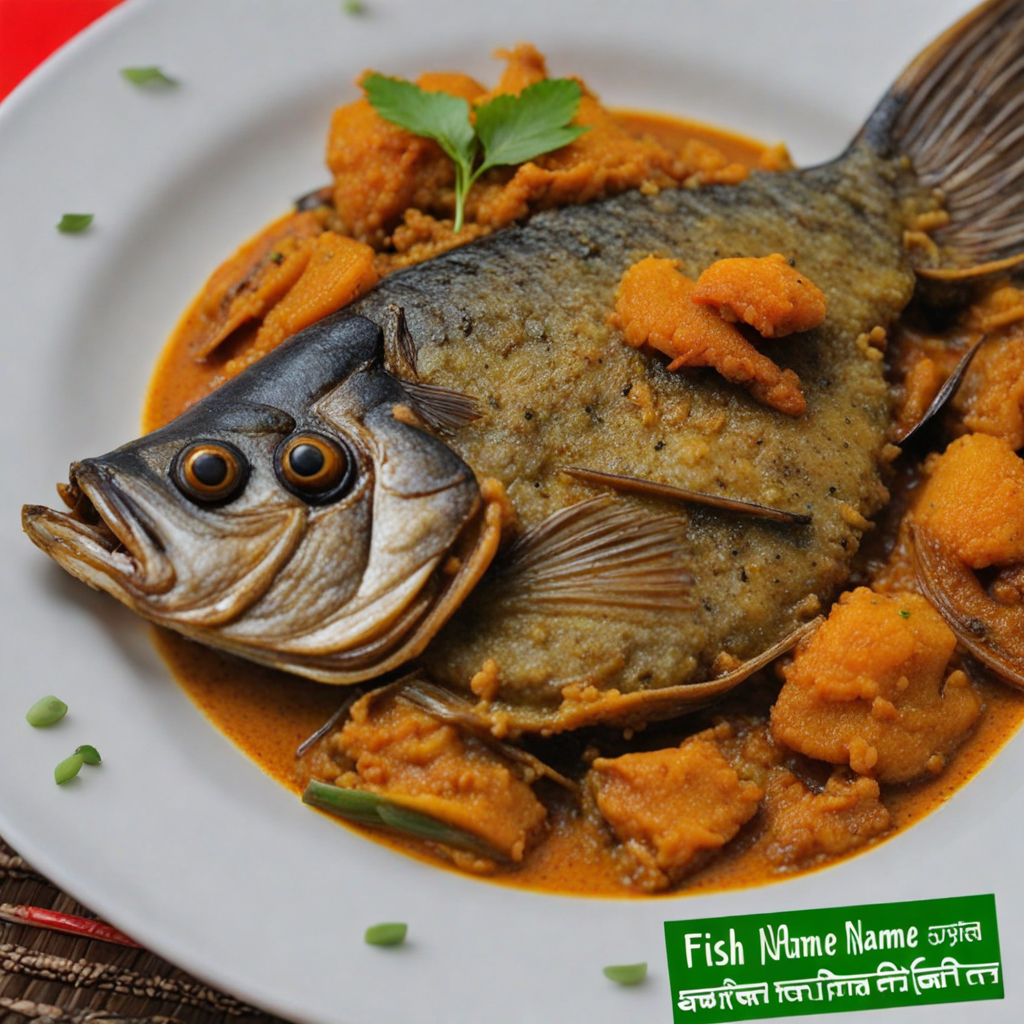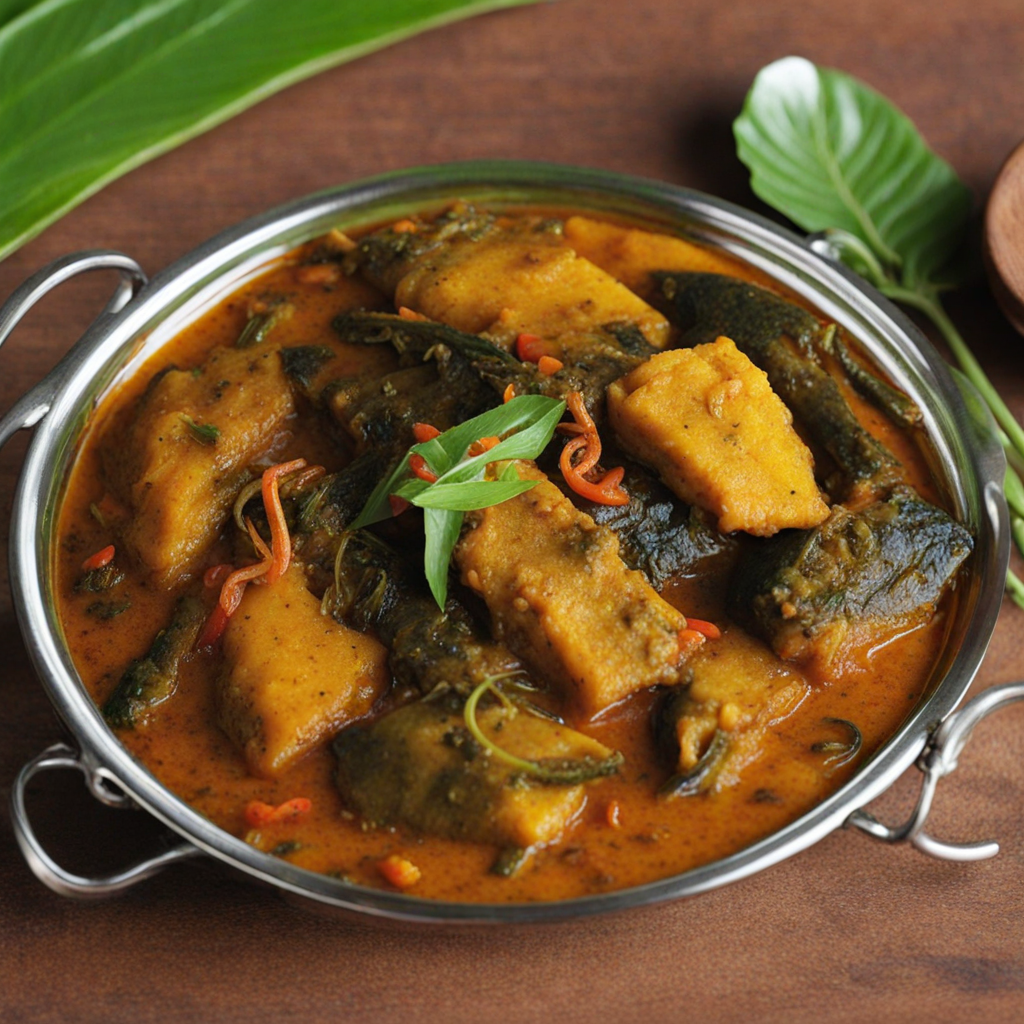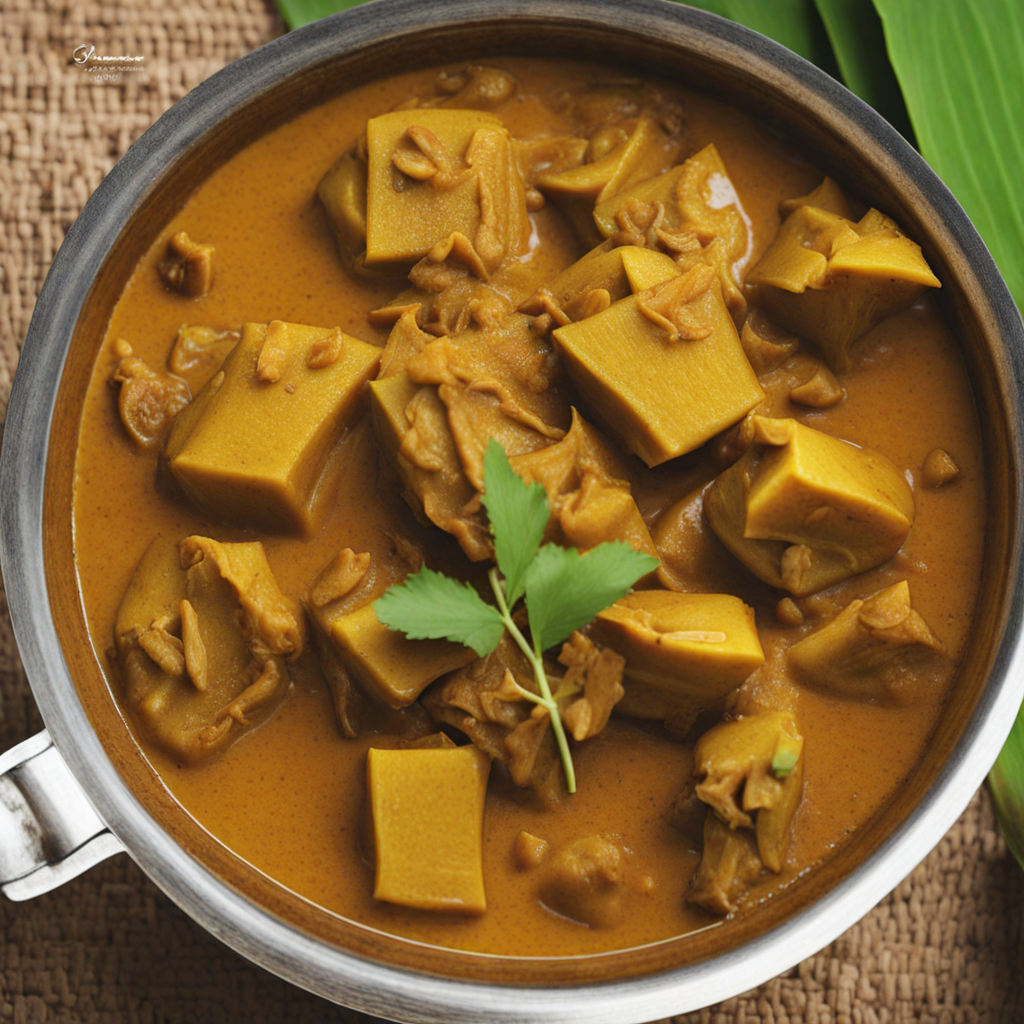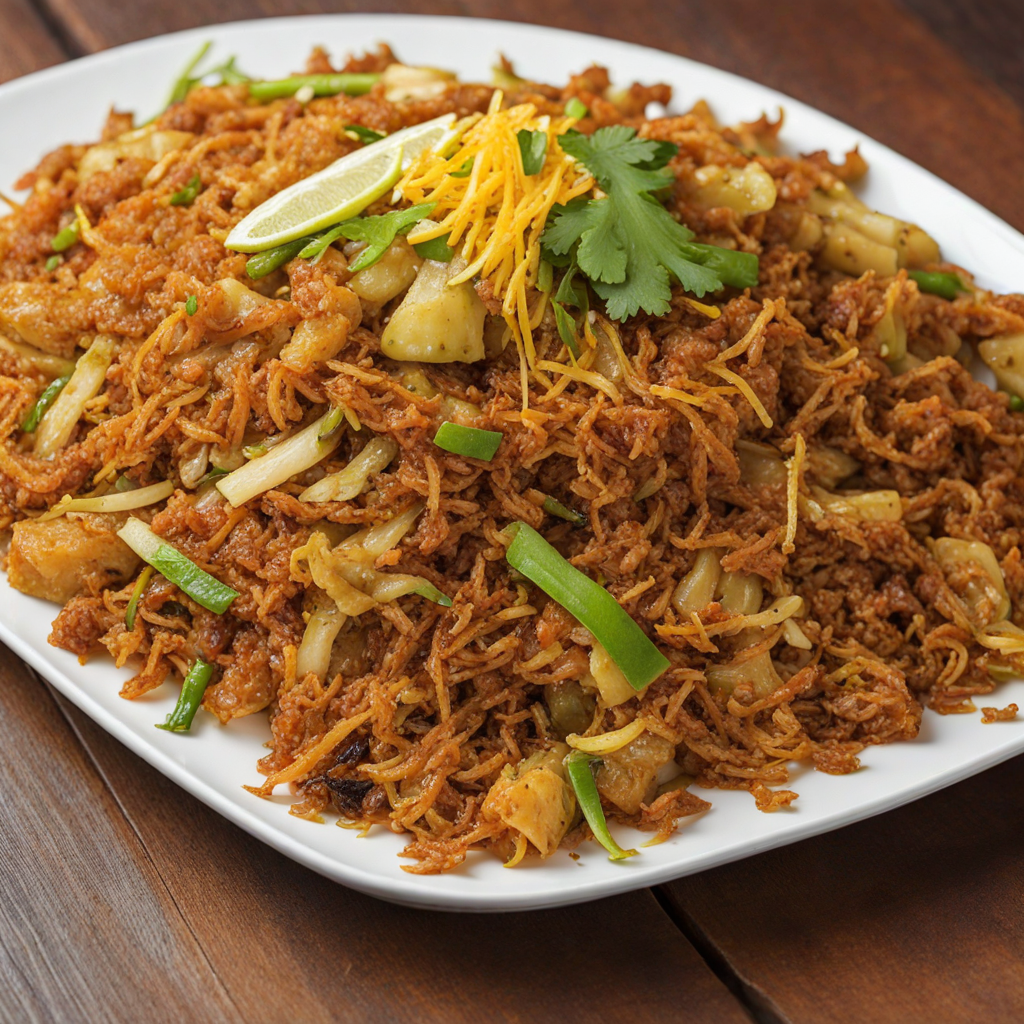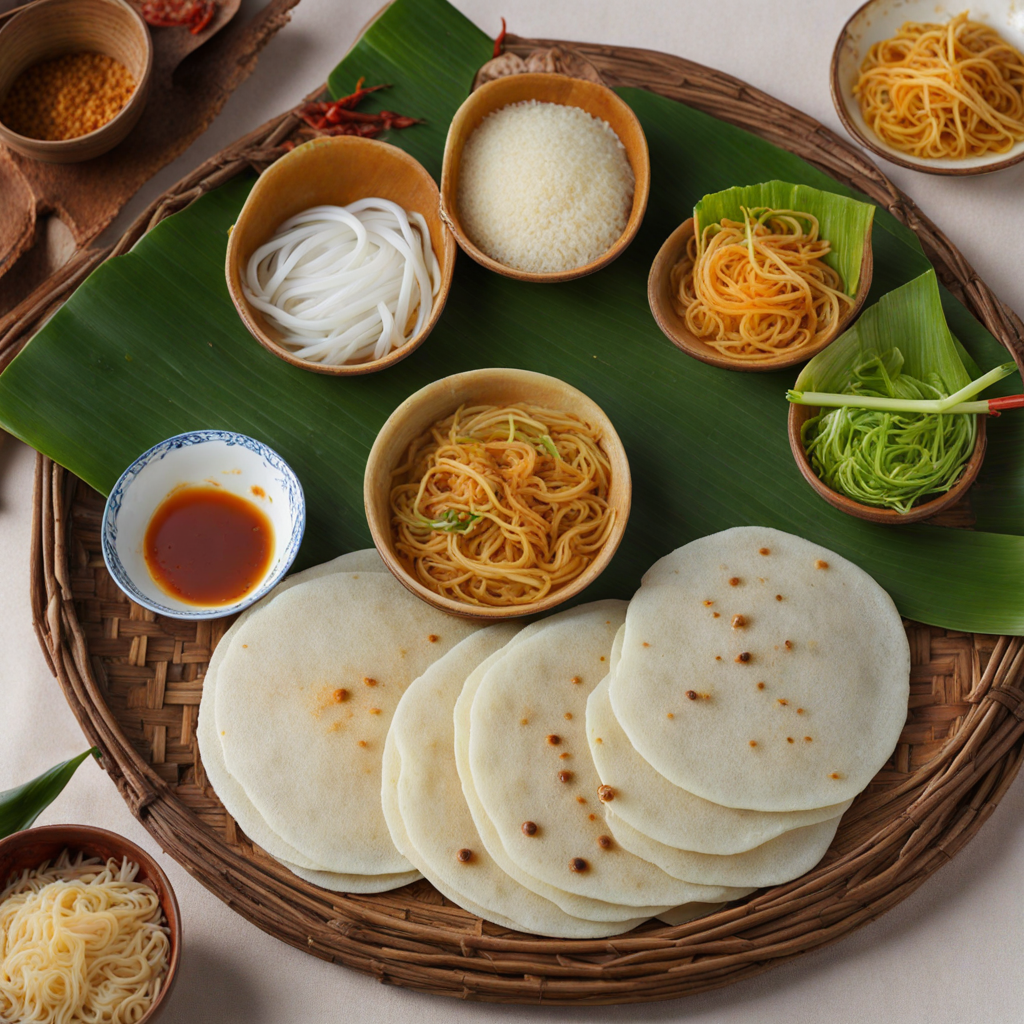Fish Ambul Thiyal
Fish Ambul Thiyal is a traditional Sri Lankan dish that offers a unique blend of flavors, showcasing the island's rich culinary heritage. This dish is primarily made with firm fish, often tuna, which is marinated in a mixture of spices and tamarind, giving it a distinct sour flavor that is both refreshing and tantalizing. The fish is then slow-cooked until tender, allowing it to absorb the deep, complex flavors of the spices, which typically include black pepper, coriander, and garlic. The result is a dish that is not only aromatic but also beautifully textured, with the fish flaking apart effortlessly on the plate. The preparation of Fish Ambul Thiyal is an art in itself, as the balance of spices and tamarind must be just right to achieve the desired tanginess. The tamarind not only adds a sour note but also acts as a natural preservative, allowing the dish to be stored for longer periods, which is a practical aspect rooted in Sri Lankan history. Served alongside rice and various sambols or chutneys, this dish becomes a centerpiece of a meal, inviting diners to engage with the vibrant flavors and aromas that characterize Sri Lankan cuisine. Eating Fish Ambul Thiyal is an immersive experience, as the combination of spices, the sourness from the tamarind, and the freshness of the fish create a harmony that dances on the palate. The dish is often accompanied by coconut sambol or a side of lentils, enhancing the overall flavor profile and providing a wholesome balance to the meal. For those looking to discover new tastes, Fish Ambul Thiyal offers a delightful journey into the heart of Sri Lankan gastronomy, with every bite telling a story of tradition, culture, and the vibrant land from which it hails.
How It Became This Dish
Maalu Ambul Thiyal: A Culinary Jewel of Sri Lanka In the rich tapestry of Sri Lankan cuisine, few dishes encapsulate the island's cultural heritage and culinary artistry quite like Maalu Ambul Thiyal. This traditional fish curry, renowned for its bold flavors and unique preparation methods, is not just a meal; it is a celebration of Sri Lanka's coastal geography, agricultural bounty, and historical trade connections. Origins Maalu Ambul Thiyal, often simply referred to as 'ambul thiyal', traces its roots back to the coastal communities of Sri Lanka, where fishing has been a vital part of life for centuries. The term "maalu" refers to fish, while "ambul" means sour and "thiyal" translates to a dry curry. This dish exemplifies the island's reliance on fresh catch from the Indian Ocean, particularly tuna, which is favored for its firm texture and flavor. Historically, the preparation of Maalu Ambul Thiyal reflects the influences of various cultures that have interacted with Sri Lanka over the millennia. The indigenous Sinhalese, who have inhabited the island for over two millennia, developed a unique culinary style that was enriched by the arrival of traders and colonizers. Arab, Portuguese, Dutch, and British influences have all left their marks on Sri Lankan cuisine, but it is the indigenous tradition that forms the core of dishes like Maalu Ambul Thiyal. Cultural Significance Maalu Ambul Thiyal is more than just a dish; it is a cultural emblem of Sri Lanka. Its preparation and consumption are often tied to communal gatherings and family occasions. In many households, this dish is served during festive times, weddings, and important celebrations, highlighting its significance in the social fabric of Sri Lankan life. The dish is particularly known for its use of goraka, a sour fruit indigenous to Sri Lanka that lends an unmistakable tanginess to the curry. Goraka is not only cherished for its flavor but also for its health benefits, being rich in antioxidants and believed to aid digestion. This ingredient ties the dish to the local environment, showcasing the interplay between the land and the culinary practices of the people. Preparation and Ingredients The traditional preparation of Maalu Ambul Thiyal involves a meticulous process that honors age-old techniques. Fresh tuna is typically cut into chunks and marinated with a mixture of spices, including turmeric, black pepper, and salt. The key to its distinctive taste, however, lies in the use of dried goraka and a blend of aromatic spices that infuse the fish with deep, complex flavors. The cooking method is equally significant. The fish is usually cooked in a clay pot over a low flame, allowing for even heat distribution and a gradual melding of flavors. The result is a dish characterized by its thick, dry consistency, where the fish is tender yet retains its shape, and the spices create a rich, dark sauce that clings to each piece. Development Over Time Over the centuries, Maalu Ambul Thiyal has evolved while still retaining its core essence. The dish has adapted to changing agricultural practices and the availability of ingredients. While traditional recipes call for tuna, variations have emerged using other types of fish, depending on local availability and personal preferences. This flexibility has allowed Maalu Ambul Thiyal to remain relevant in modern Sri Lankan kitchens. The rise of globalization and the influence of international cuisine have also impacted the way Maalu Ambul Thiyal is perceived and prepared. Chefs and home cooks alike have begun to experiment with the dish, incorporating elements from other culinary traditions while respecting its roots. This fusion has led to innovative versions of the dish, featuring different spices or cooking techniques, but the foundational flavors and cultural significance remain intact. Moreover, as Sri Lanka has garnered international attention for its unique culinary offerings, Maalu Ambul Thiyal has gained recognition beyond its borders. Food enthusiasts and travelers seeking authentic experiences are increasingly drawn to this dish, which serves as a gateway to understanding Sri Lanka's rich culinary heritage. Restaurants, both local and international, have started to feature Maalu Ambul Thiyal on their menus, introducing it to a wider audience and fostering a renewed appreciation for traditional Sri Lankan cuisine. Contemporary Relevance Today, Maalu Ambul Thiyal is celebrated not only as a traditional dish but also as a symbol of sustainable fishing practices and local culinary traditions. As the conversation around food sustainability and sourcing continues to grow, many Sri Lankan fishermen and chefs are advocating for the use of locally caught fish, emphasizing the importance of preserving both the ecosystem and culinary heritage. In addition, the dish has found its place in the global food scene through various food festivals, cultural exchanges, and culinary showcases. As chefs and food writers share their love for Sri Lankan cuisine, Maalu Ambul Thiyal stands out as a quintessential representation of the island's flavors and culinary philosophy. Conclusion Maalu Ambul Thiyal is a culinary masterpiece that transcends mere sustenance. It is a dish steeped in history, reflecting the cultural richness of Sri Lanka and the harmonious relationship between its people and the sea. From its origins in coastal fishing communities to its contemporary iterations in global cuisine, Maalu Ambul Thiyal serves as a delicious reminder of the importance of tradition, sustainability, and the ever-evolving nature of culinary arts. As the world continues to embrace diverse culinary traditions, Maalu Ambul Thiyal holds a special place in the hearts of those who savor its unique flavors and appreciate the story it tells—a story of place, identity, and the enduring legacy of Sri Lankan cuisine. Whether enjoyed at a family gathering or a fine dining restaurant, this dish invites everyone to partake in a timeless culinary journey, rooted in the rich soil of the island and the vibrant waves of the Indian Ocean.
You may like
Discover local flavors from Sri Lanka


